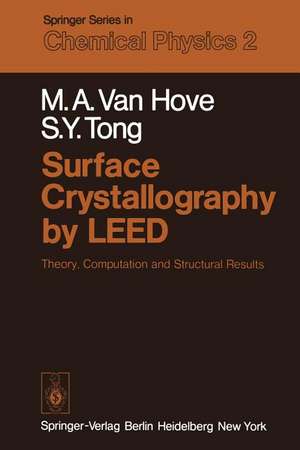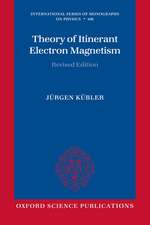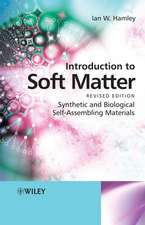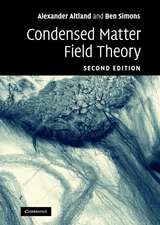Surface Crystallography by LEED: Theory, Computation and Structural Results: Springer Series in Chemical Physics, cartea 2
Autor M.A. van Hove, S.Y. Tongen Limba Engleză Paperback – 18 oct 2011
Din seria Springer Series in Chemical Physics
- 20%
 Preț: 585.29 lei
Preț: 585.29 lei - 15%
 Preț: 643.00 lei
Preț: 643.00 lei - 15%
 Preț: 635.96 lei
Preț: 635.96 lei - 18%
 Preț: 953.03 lei
Preț: 953.03 lei - 15%
 Preț: 644.63 lei
Preț: 644.63 lei - 15%
 Preț: 638.43 lei
Preț: 638.43 lei - 15%
 Preț: 649.22 lei
Preț: 649.22 lei - 15%
 Preț: 647.40 lei
Preț: 647.40 lei - 15%
 Preț: 638.89 lei
Preț: 638.89 lei - 15%
 Preț: 652.31 lei
Preț: 652.31 lei - 15%
 Preț: 638.43 lei
Preț: 638.43 lei - 15%
 Preț: 637.13 lei
Preț: 637.13 lei - 18%
 Preț: 952.57 lei
Preț: 952.57 lei - 18%
 Preț: 947.85 lei
Preț: 947.85 lei - 15%
 Preț: 636.45 lei
Preț: 636.45 lei - 15%
 Preț: 649.87 lei
Preț: 649.87 lei - 18%
 Preț: 953.65 lei
Preț: 953.65 lei - 18%
 Preț: 894.03 lei
Preț: 894.03 lei - 15%
 Preț: 647.27 lei
Preț: 647.27 lei - 18%
 Preț: 1249.00 lei
Preț: 1249.00 lei - 15%
 Preț: 646.30 lei
Preț: 646.30 lei - 18%
 Preț: 954.14 lei
Preț: 954.14 lei - 24%
 Preț: 1226.80 lei
Preț: 1226.80 lei - 18%
 Preț: 961.72 lei
Preț: 961.72 lei - 18%
 Preț: 1002.31 lei
Preț: 1002.31 lei - 24%
 Preț: 647.23 lei
Preț: 647.23 lei - 18%
 Preț: 888.49 lei
Preț: 888.49 lei - 18%
 Preț: 908.04 lei
Preț: 908.04 lei - 15%
 Preț: 641.38 lei
Preț: 641.38 lei - 15%
 Preț: 585.40 lei
Preț: 585.40 lei - 15%
 Preț: 639.90 lei
Preț: 639.90 lei - 18%
 Preț: 897.02 lei
Preț: 897.02 lei
Preț: 388.52 lei
Nou
Puncte Express: 583
Preț estimativ în valută:
74.34€ • 77.83$ • 61.51£
74.34€ • 77.83$ • 61.51£
Carte tipărită la comandă
Livrare economică 07-21 aprilie
Preluare comenzi: 021 569.72.76
Specificații
ISBN-13: 9783642671975
ISBN-10: 3642671977
Pagini: 304
Ilustrații: X, 288 p.
Dimensiuni: 155 x 235 x 16 mm
Greutate: 0.43 kg
Ediția:Softcover reprint of the original 1st ed. 1979
Editura: Springer Berlin, Heidelberg
Colecția Springer
Seria Springer Series in Chemical Physics
Locul publicării:Berlin, Heidelberg, Germany
ISBN-10: 3642671977
Pagini: 304
Ilustrații: X, 288 p.
Dimensiuni: 155 x 235 x 16 mm
Greutate: 0.43 kg
Ediția:Softcover reprint of the original 1st ed. 1979
Editura: Springer Berlin, Heidelberg
Colecția Springer
Seria Springer Series in Chemical Physics
Locul publicării:Berlin, Heidelberg, Germany
Public țintă
ResearchCuprins
1. Introduction.- 1.1 LEED as a Tool for Surface Studies.- 1.2 Purpose of the Computational Programs.- 1.3 Physical Processes Included in the Programs.- 1.4 Capabilities of the Programs.- 1.5 Size, Speed and Limitations of the Programs.- 1.6 Relation to Other LEED Programs.- 1.7 Some Computational Considerations.- 2. The Physics of LEED.- 2.1 A Simple Description of the LEED Process: Clean Crystals and Bragg Reflections in One Dimension.- 2.2 Peak Width and Electron Penetration Depth.- 2.3 Three-Dimensional Effects.- 2.4 Overlayer Effects.- 2.5 Elements of a LEED Theory.- 3. Basic Aspects of the Programs.- 3.1 Units and Geometrical Conventions.- 3.2 Layers, Subplanes and Plane Waves.- 3.3 Superlattices.- 3.4 Atomic Scattering and the Calculation of Phase Shifts.- 3.5 Thermal Vibrations.- 3.6 Ordering of (?,m) Pairs.- 4. Symmetry and Its Use.- 4.1 Symmetry and Registries.- 4.2 Symmetry Among Beams.- 4.3 Some Formulas.- 4.4 Summary.- 5. Calculation of Diffraction Matrices for Single Bravais-Lattice Layers.- 5.1 Layer Diffraction Matrices.- 5.2 Subroutine MSMF.- 5.3 The Intralayer Multiple-Scattering Matrix X.- 5.4 Scattering Amplitudes and Temperature Effects.- 6. The Combined Space Method for Composite Layers: by Matrix Inversion.- 6.1 The Formalism.- 6.2 Subroutine MTINV.- 7. The Combined Space Method for Composite Layers: by Reverse Scattering Perturbation.- 7.1 The Formalism of Reverse Scattering Perturbation (RSP) Theory.- 7.2 Combining RSP and Matrix Inversion.- 7.3 Subroutine MPERTI.- 8. Stacking Layers by Layer Doubling.- 8.1 The Formalism.- 8.2 Bulk Treatment: Subroutine SUBREF.- 8.3 Surface Treatment: Subroutines ADREF1, DBLG, DBG.- 9. Stacking Layers by Renormalized Forward Scattering (RFS) Perturbation.- 9.1 The Formalism.- 9.2 Subroutines RFS03, RFS02 andOthers.- 10. Assembling a Program: the Main Program and the Input.- 10.1 Preparing a Calculation.- 10.2 The Main Program.- 10.3 Explanation of Output.- 10.4 Main Program for Clean fcc (111) and hcp (0001) Faces, Including Possible Top-Layer Registry Shifts, Using RFS.- 10.5 Main Program for a Small-Atom p(2×1) Overlayer on a fcc (111) Substrate, Using RSP and RFS.- 10.6 Main Program for a Clean fcc or bcc (100) Surface, Using RFS.- 10.7 Main Program for a p(2×2) Overlayer on an fcc or bcc (100) Substrate, Using Layer Doubling.- 10.8 Main Program for a c(2×2) Overlayer on an fcc or bcc (100) Substrate, with Rumpling of the Topmost Substrate Layer, Using Matrix Inversion and RFS.- 10.9 Main Program for an Upright Diatomic Molecule on an fcc or bcc (100) Substrate, Using Layer Doubling.- 11. Subroutine Listings.- 12. Structural Results of LEED Crystallography.- 12.1 Non-Metals.- 12.2 Clean Metals.- 12.3 Adsorption on Metals.- 12.4 Bibliography.- Appendix A. Symmetry Among Plane Waves.- Appendix B. Lattice Sums Over Sublattices.- Appendix C. A Line-Printer Plotting Program.- References.


















